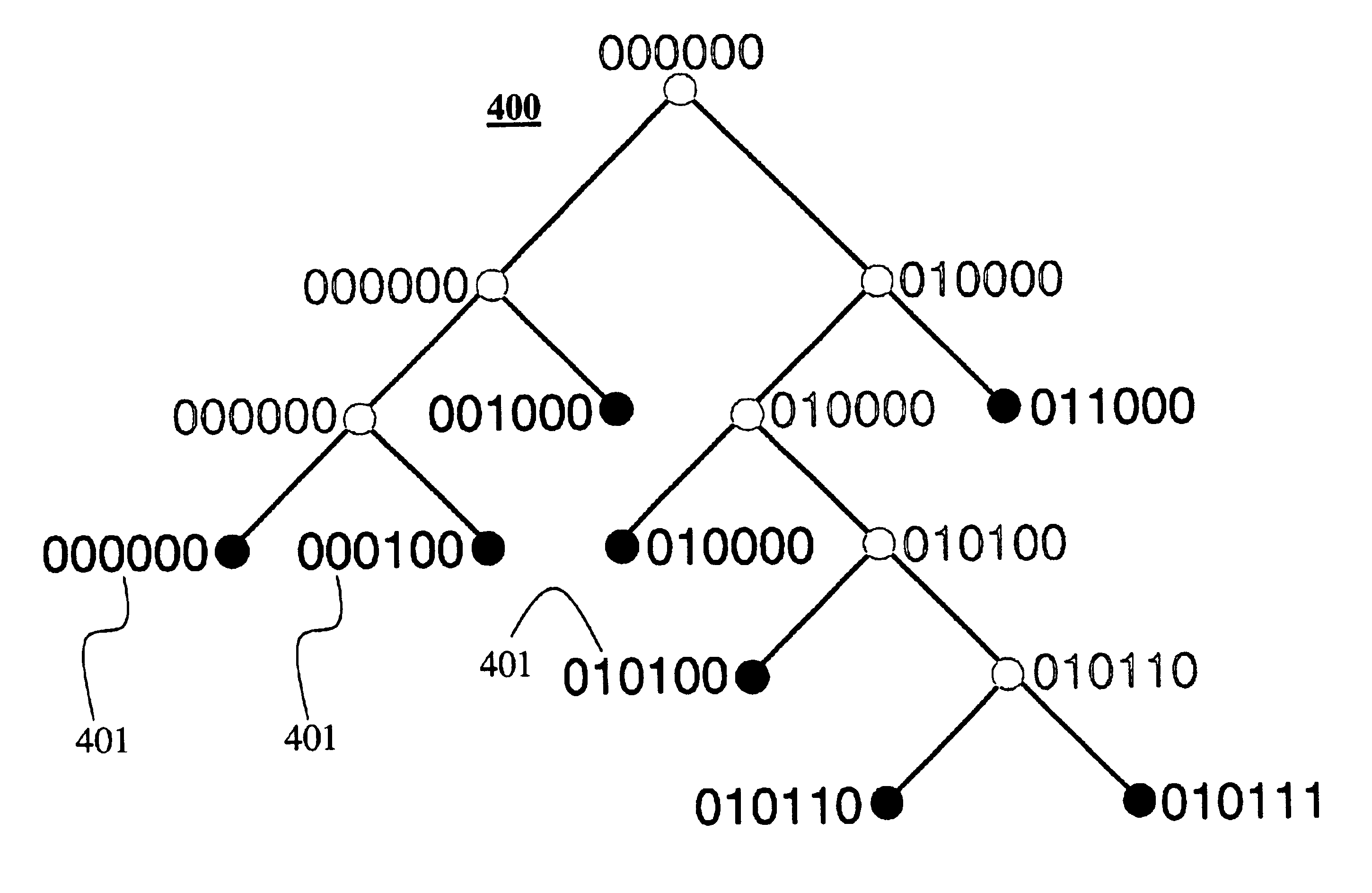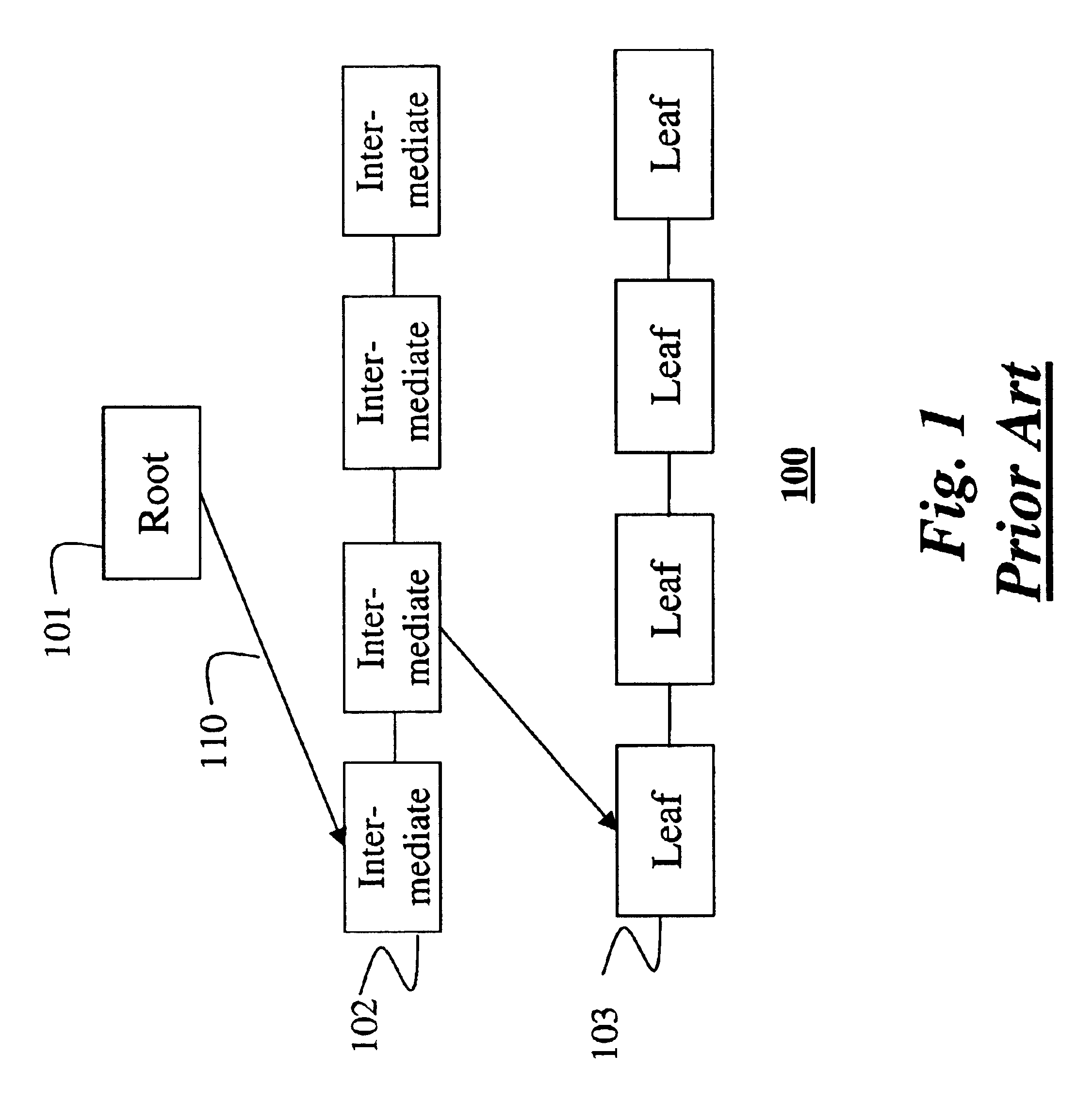Method for traversing quadtrees, octrees, and N-dimensional bi-trees
- Summary
- Abstract
- Description
- Claims
- Application Information
AI Technical Summary
Benefits of technology
Problems solved by technology
Method used
Image
Examples
Embodiment Construction
FIG. 4 shows a hierarchical tree structure 400 and associated locational codes for a one-dimensional bi-tree. Locational codes 401 are used by a bi-tree traversal method according to the present invention. Each locational code 401 is represented in binary form in a data field with a bit size that is greater than or equal to the maximum number of levels in the tree, NLEVELS. For example, each locational code for a bi-tree with up to eight levels can be represented by eight bits.
The bits in each locational code 401 are numbered from right (LSB) to left (MSB) starting from zero. Each bit in the locational code indicates a branching pattern at a corresponding level of the bi-tree, i.e., bit k represents the branching pattern at level k in the bi-tree. Unlike the prior art where locational codes are interleaved, we use separate locational codes for each dimension of the cell, e.g., a set of locational codes for each cell of a two-dimensional bi-tree, i.e., a quadtree, comprises both an x...
PUM
 Login to View More
Login to View More Abstract
Description
Claims
Application Information
 Login to View More
Login to View More - R&D
- Intellectual Property
- Life Sciences
- Materials
- Tech Scout
- Unparalleled Data Quality
- Higher Quality Content
- 60% Fewer Hallucinations
Browse by: Latest US Patents, China's latest patents, Technical Efficacy Thesaurus, Application Domain, Technology Topic, Popular Technical Reports.
© 2025 PatSnap. All rights reserved.Legal|Privacy policy|Modern Slavery Act Transparency Statement|Sitemap|About US| Contact US: help@patsnap.com



